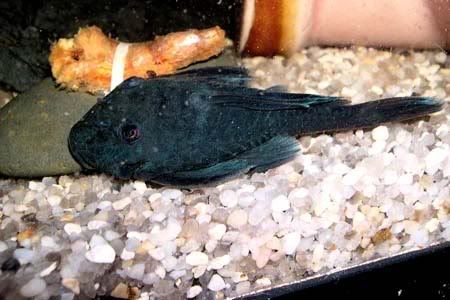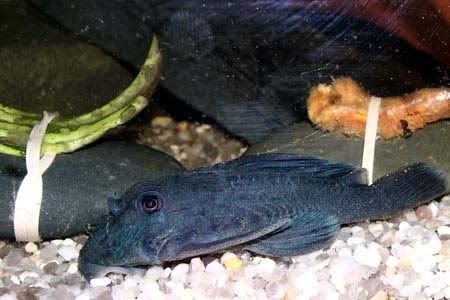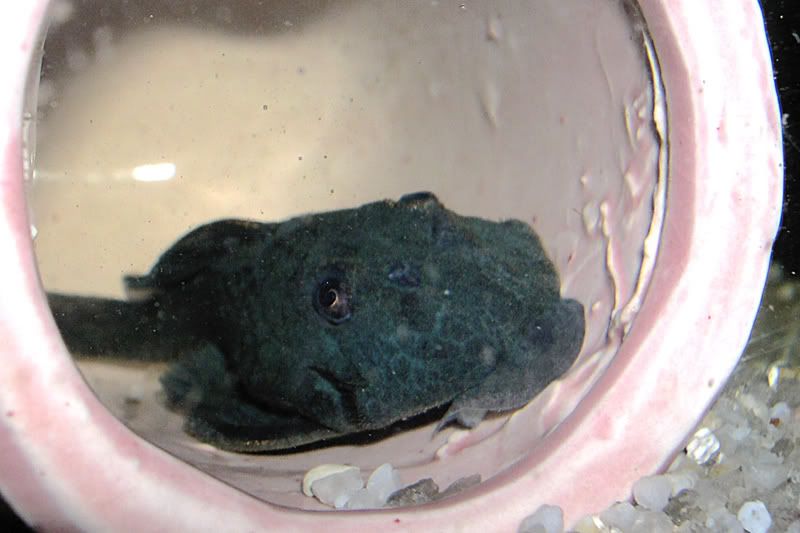My blue panaques (L239)
Posted: 08 May 2007, 05:47
Not coloring up fully yet, but eating well. I've only had them about a week or so.






The Aquarium Catfish website
https://planetcatfish.com/forum/



It's unlikely that they will: despite their common name, these fish are no true Panaque's, and neither are they wood-eaters. Given the shape of their mouth, I think they're Aufwuchs-eaters (like Baryancistrus): maybe they graze on wood and will ingest soft wood particles while doing so, but they are no wood-eaters in the true sense of the word...bronzefry wrote:Nice! Have they started munching on wood yet?
Amanda
Scobinancistrus is tentatively placed under the Panaque label by Jon Armbruster, based on the fact that they have very similar features. Ichtyologists don't usually take feeding habits as part of the species definition. Rather, they rely on physical features such as counts of scales/scutes/plates, teeth, proportions of different body features (e.g. body-length in relation to head-length, eye-size in relation to head-length, etc). Using those type of metrics (apparently) Scobinancistrus isn't noticably different from Panaque.Judazzz wrote:Besides L239, I haven't seen Loricarids in aquarium stores being sold under the name Panaque.
Sometimes, Hypostomus species previous known as Cochliodon are also called Panaque: it's incorrect, but at least those fish are wood-eaters.
And some ichtyologists (whether rightfully or not I don't know) have placed Scobinancistrus species within the genus Panaque, those fish aren't wood-eaters (they're primarily carnivorous).
Yes, to some extent. The number and shape of teeth obviously develop depending on feeding hapits, which in turn is somewhat affected by WHAT the species eats as well as how it gets to it's food.bronzefry wrote:I apologize for hijaking your post, Rich, but I'm curious.
Since dentition is taken into consideration with identification, I wonder if this is an indirect way of looking at how a species eats, but not what. Am I way off?
Amanda